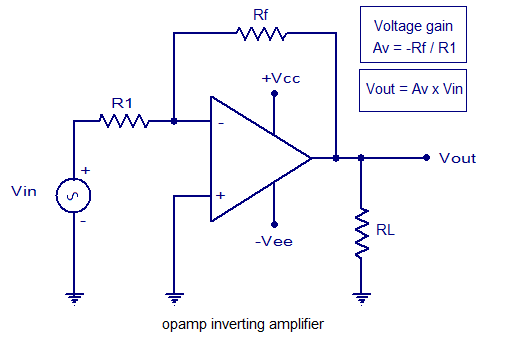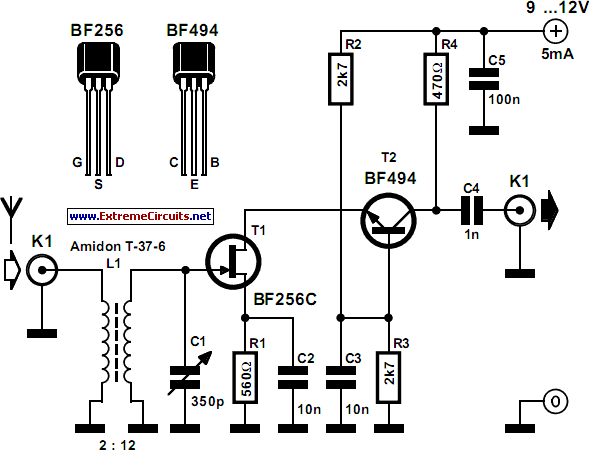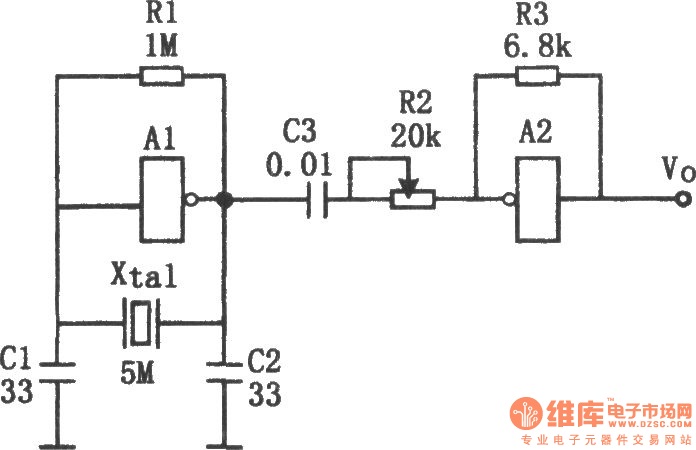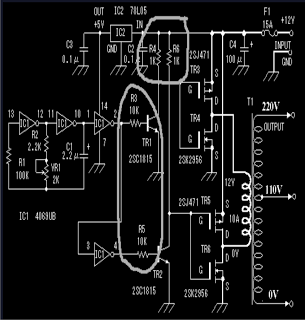
brain wave machine
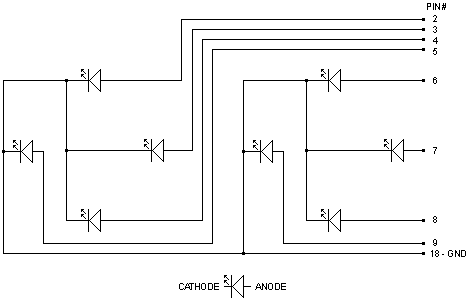
A simple design for brain-wave goggles can be created using appropriate eyewear, such as safety glasses, along with an array of Light Emitting Diodes (LEDs). The control of the LED flash rate is managed through the PC's parallel port. Audio stimulation can be achieved using a stereo system and headphones or the sound card of the PC. The design incorporates eight LEDs, one for each data output line of the parallel port. This setup allows for easy control of each individual LED, enabling variations in both pattern and intensity. Each lens of the goggles will accommodate four LEDs arranged in a diamond pattern. The LEDs are powered by the parallel port and controlled via software. The LEDs should be securely fitted into the designated holes, ensuring there is adequate space between them and the user's face while wearing the goggles. The LEDs fit snugly into 3/16" holes, which may not require glue for secure placement. The cathode leads of all the LEDs should be connected together and linked to a ground pin on the parallel port connector, with pins 18-25 available for this purpose. It is important to note that the flat side of the LED indicates the cathode lead. The anode leads of the LEDs should be connected to the appropriate pins on the parallel port, following the provided circuit diagram that specifies which pin corresponds to each LED. Long wires are recommended for this setup, as the user will likely be lying down while using the goggles. If a printer cable is employed, a battery and an LED can be used to identify which pin each wire corresponds to. If the parallel port wires are not already bundled, they should be secured together with wire ties to prevent tangling. Additionally, to prevent strain on the connections, the wire bundle should be attached to the goggles to ensure it does not become detached during use.
The design of the brain-wave goggles integrates both hardware and software components to facilitate an engaging user experience. The LEDs serve as the primary visual stimuli, illuminating in patterns that can be programmed to synchronize with audio stimuli, enhancing the overall effectiveness of the brain-wave entrainment process. The choice of safety glasses as the base for the goggles provides a durable and comfortable fit, ensuring that the user can wear them for extended periods without discomfort.
The arrangement of the LEDs in a diamond pattern on each lens is critical for achieving a balanced visual effect, allowing for optimal light exposure to the user's eyes. This configuration not only enhances the aesthetic appeal of the goggles but also maximizes the effectiveness of the light stimulation. The use of the parallel port for control allows for real-time adjustments to the LED flash rates, providing flexibility in experimentation with different stimulation patterns.
In terms of assembly, attention to detail is essential. Ensuring that the cathode and anode leads are correctly connected is vital for the functionality of the circuit. The use of strain relief mechanisms will help maintain the integrity of the connections, reducing the risk of disconnections during use. The entire assembly process should be conducted with care to ensure safety and reliability, particularly when incorporating electronic components with wearable devices.
Overall, this brain-wave goggles project exemplifies a practical application of electronics in personal wellness, combining visual and auditory stimulation to potentially enhance cognitive function and relaxation. Properly executed, this design can serve as a valuable tool for individuals interested in exploring brainwave entrainment techniques.With simplicity being the goal, brain-wave goggles can be constructed from suitable eyewear, such as safety glasses, and an array of LED`s (Light Emitting Diodes). I`m using the PC`s parallel port to control the flashrate of the LED`s. Audio stimulation can be provided by a stereo and headphones or the PC`s soundcard. I`m using 8 LED`s, one per parallel port data out line. This provides an easy way to control each individual LED allowing for some variations in pattern and intensity. Each lense on the goggles will hold four LED`s in a diamond pattern. The LED`s are powered by the parallel port and controlled via softw1are. Glue the LED`s into the holes. Be sure there is room betw1een the LED`s and your face when you are wearing the goggles. Actually, the LED`s fit tightly in 3/16" holes and I didn`t need to use glue. Wire all of the LED`s cathode leads together and connect (with a long wire) to a ground pin on the parallel port connector.
Pins 18-25 are all ground so pick any one of those. Note: the flat side of the LED is the cathode lead. Connect the LED`s anode leads to the parallel port connector. Follow the circuit diagram above which outlines which parallel port pin to connect each LED to. Use long wires, you are going to want to be lying down when you use the goggles. (If you are using a printer cable you can use a battery and a LED to figure out which pin each wire is attached to. ) If your parallel port wires aren`t already in a bundle tie them together with wire-ties so they don`t get tangled.
You will also want to provide strain-relief by attaching the wire bundle to the goggles so it doesn`t get pulled off. 🔗 External reference
The design of the brain-wave goggles integrates both hardware and software components to facilitate an engaging user experience. The LEDs serve as the primary visual stimuli, illuminating in patterns that can be programmed to synchronize with audio stimuli, enhancing the overall effectiveness of the brain-wave entrainment process. The choice of safety glasses as the base for the goggles provides a durable and comfortable fit, ensuring that the user can wear them for extended periods without discomfort.
The arrangement of the LEDs in a diamond pattern on each lens is critical for achieving a balanced visual effect, allowing for optimal light exposure to the user's eyes. This configuration not only enhances the aesthetic appeal of the goggles but also maximizes the effectiveness of the light stimulation. The use of the parallel port for control allows for real-time adjustments to the LED flash rates, providing flexibility in experimentation with different stimulation patterns.
In terms of assembly, attention to detail is essential. Ensuring that the cathode and anode leads are correctly connected is vital for the functionality of the circuit. The use of strain relief mechanisms will help maintain the integrity of the connections, reducing the risk of disconnections during use. The entire assembly process should be conducted with care to ensure safety and reliability, particularly when incorporating electronic components with wearable devices.
Overall, this brain-wave goggles project exemplifies a practical application of electronics in personal wellness, combining visual and auditory stimulation to potentially enhance cognitive function and relaxation. Properly executed, this design can serve as a valuable tool for individuals interested in exploring brainwave entrainment techniques.With simplicity being the goal, brain-wave goggles can be constructed from suitable eyewear, such as safety glasses, and an array of LED`s (Light Emitting Diodes). I`m using the PC`s parallel port to control the flashrate of the LED`s. Audio stimulation can be provided by a stereo and headphones or the PC`s soundcard. I`m using 8 LED`s, one per parallel port data out line. This provides an easy way to control each individual LED allowing for some variations in pattern and intensity. Each lense on the goggles will hold four LED`s in a diamond pattern. The LED`s are powered by the parallel port and controlled via softw1are. Glue the LED`s into the holes. Be sure there is room betw1een the LED`s and your face when you are wearing the goggles. Actually, the LED`s fit tightly in 3/16" holes and I didn`t need to use glue. Wire all of the LED`s cathode leads together and connect (with a long wire) to a ground pin on the parallel port connector.
Pins 18-25 are all ground so pick any one of those. Note: the flat side of the LED is the cathode lead. Connect the LED`s anode leads to the parallel port connector. Follow the circuit diagram above which outlines which parallel port pin to connect each LED to. Use long wires, you are going to want to be lying down when you use the goggles. (If you are using a printer cable you can use a battery and a LED to figure out which pin each wire is attached to. ) If your parallel port wires aren`t already in a bundle tie them together with wire-ties so they don`t get tangled.
You will also want to provide strain-relief by attaching the wire bundle to the goggles so it doesn`t get pulled off. 🔗 External reference
